Dahlias: To Lift or Not to Lift? What You Do This Fall Shapes Next Year’s Blooms
To lift or not to lift, that is the question – and if you want to keep your favorite dahlia tubers in the best shape for next year, here’s how best to handle dahlias in the fall
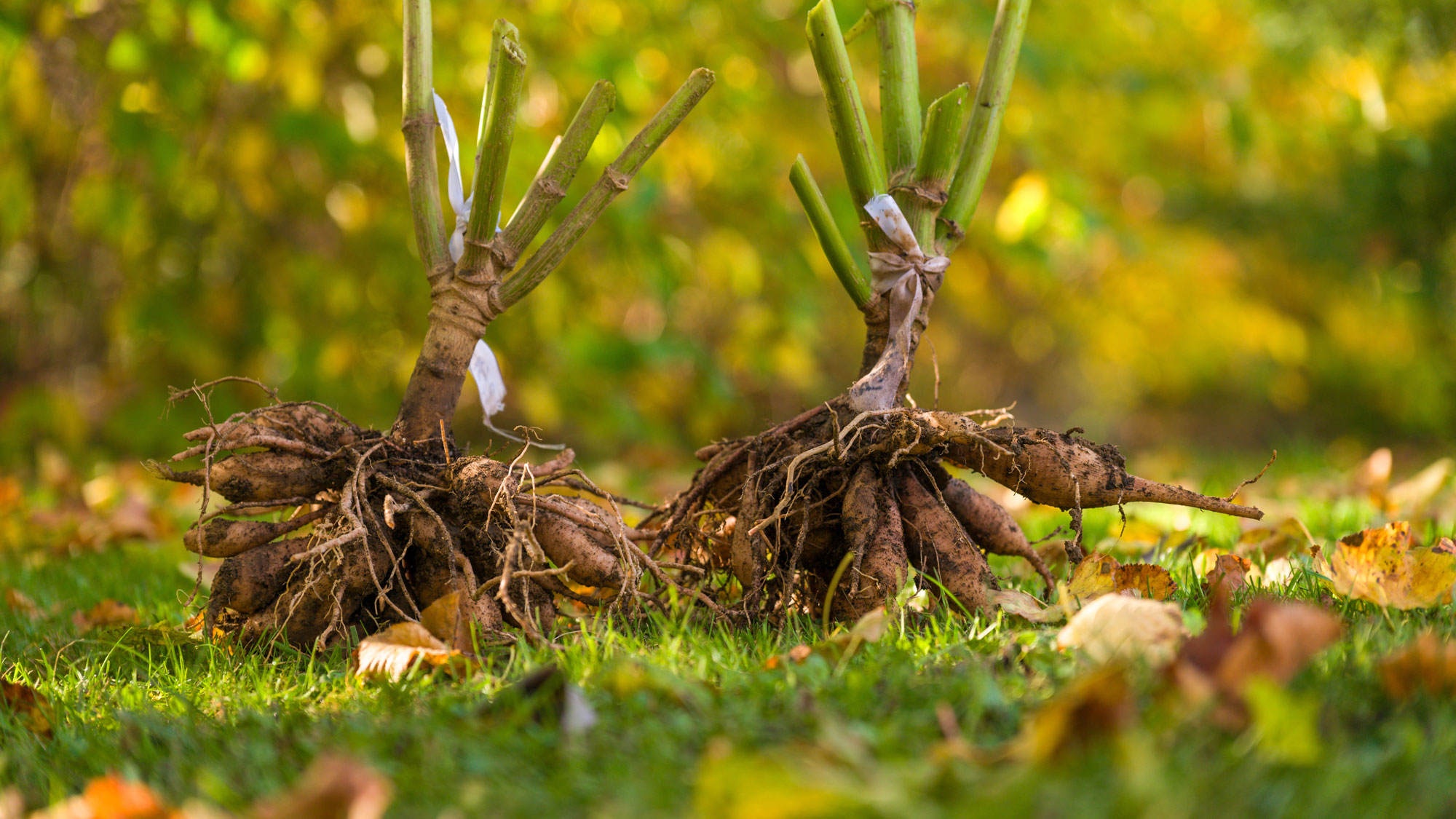

Amy Draiss
Dahlias are beautiful late-season flowers that reward the patient gardener with striking, swoonworthy blooms. Many enthusiasts are in a state of anticipation for much of summer, waiting to enjoy those delectable dahlia displays. But once the show’s over, we’ll then be wondering what to do with our dahlias in the fall. At this point, dahlia care inevitably hinges around a single question regarding tubers for the blooms we have admired and fervently wish to keep – to lift or not to lift?
Do you confidently know what to do with dahlias after flowering? They are perennials in warmer climates and annuals elsewhere. If you live where dahlias are not hardy but want to enjoy them again next year, you’ll need to lift and store the tubers. The decision to lift or not to lift is important for maintaining healthy, flowering dahlias. If you’re new to growing them, this decision can be tough. So here’s how to make that one big decision that can guarantee your dahlias flourish next year.
Deciding what to do with dahlias in the fall is a personal choice – but this article will help you make an informed one. It covers the inside scoop on whether lifting is best for your tubers, depending on your growing zone and conditions – plus, how best to store your dahlias for winter.
What Dahlias Need in Fall
With the best dahlia care, your plants are capable of blooming well into fall. Exactly when they start and stop blooming will depend on variety, growing zone, and local weather. While they are flowering, there are a few things to check before you have to worry about the question of lifting tubers. You shouldn’t lift tubers while your dahlias are still blooming – but there are a few things to check first. Whether you’ll be lifting the tubers or not, they can benefit from some fall care while they are still flowering.
While plants are blooming, maintain health by removing lower leaves on stems to improve airflow and protect against mildew, especially if you are having a damp autumn. You may also need to use a fungicide on leaves that show any signs of mildew. It’s also crucial that you keep deadheading dahlia blooms for as long as you can, to get as many flowers as possible from each plant. Snip just above a leaf node using a part of snips or shears like Scotts' Straight Tip Floral Shears from Walmart.
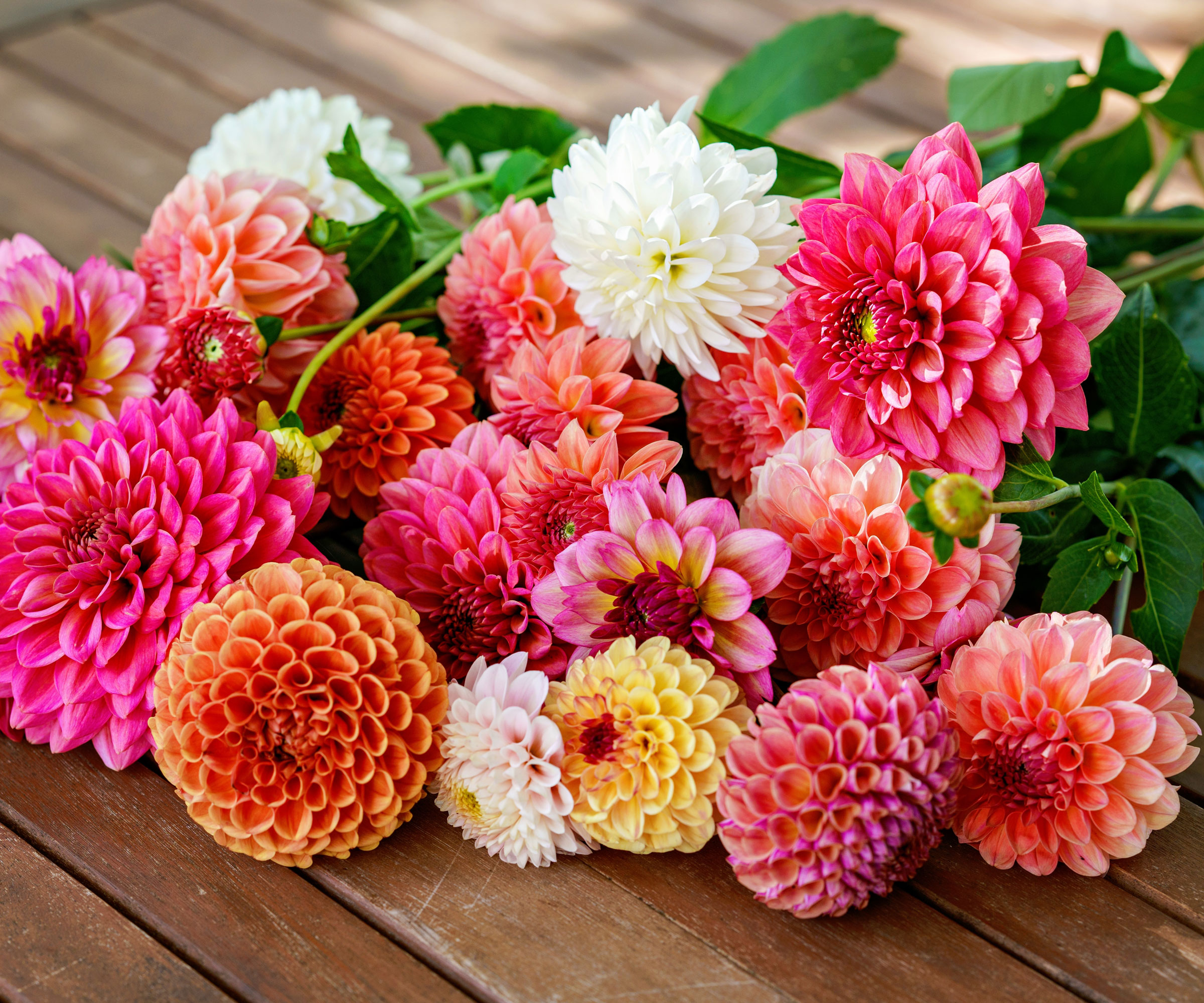
However, after the first frost, you can cut back the stalks and think about next steps for best dahlia care in the fall. Deciding what to do with dahlias after flowering will depend on whether you are longing to see more from these particular varieties. If you only want to treat dahlias as annuals, you don’t have to do anything except cut back the foliage in fall. But if you want to enjoy your dahlias again, this is the point where you will mull over the need for lifting tubers for winter storage.
To best answer this question, it primarily depends on where you live. In cooler climates where dahlias aren’t hardy, lifting is a popular option if you want to keep your favorites for next year. The idea is to lift and remove the tubers, store them safely for winter, and replant them in spring.
Sign up for the Gardening Know How newsletter today and receive a free copy of our e-book "How to Grow Delicious Tomatoes".
Why Not Leave Tubers in Ground?
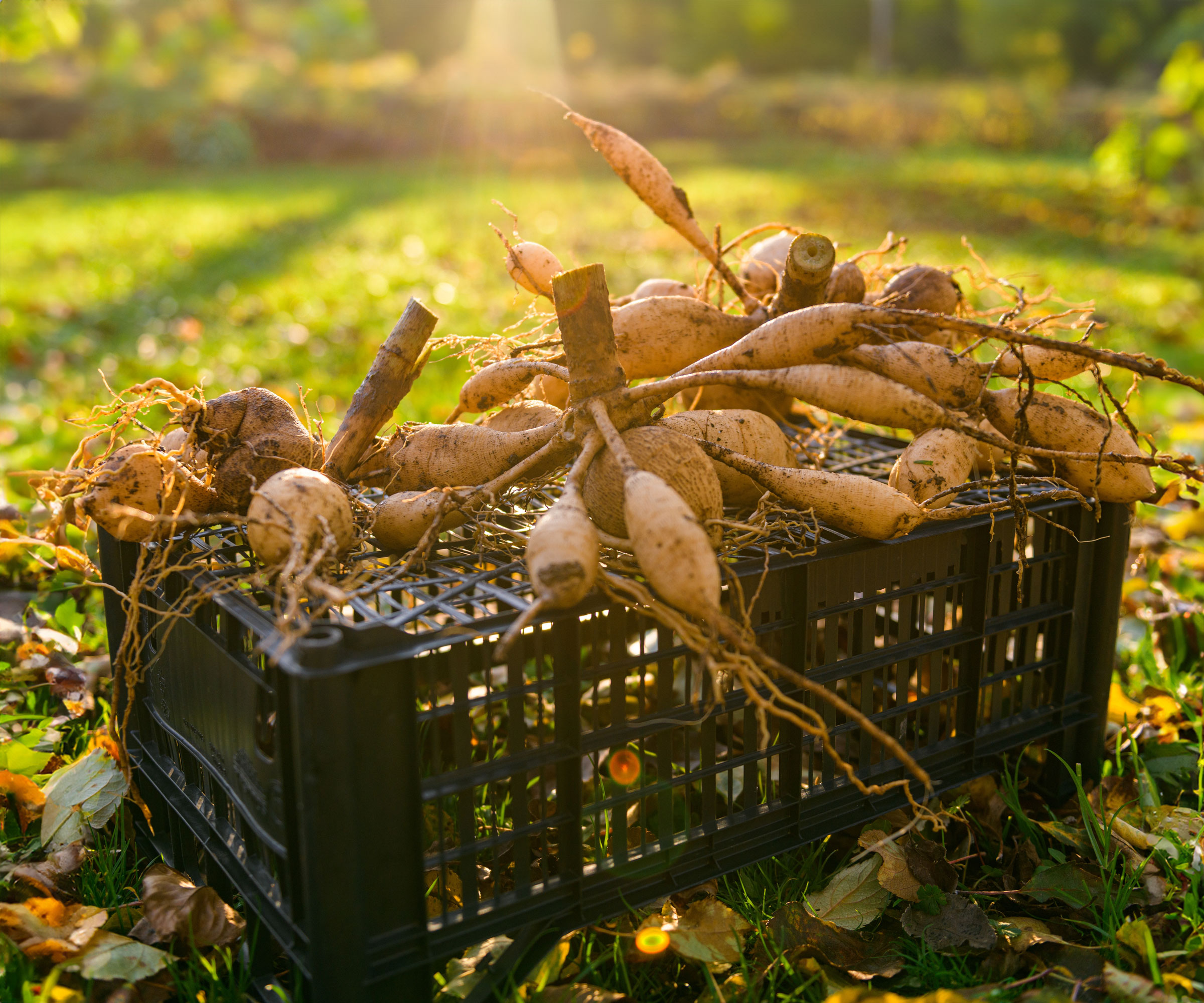
Tubers are fleshy structures that grow underground for the purpose of storing nutrients and energy. It’s important to leave foliage on dahlias until after the first frost, or until it dies back. This is because the leaves are actively taking energy from the sun and storing it in the tubers. Although it’s not quite the same thing, tubers are also sometimes referred to as bulbs.
Dahlias need healthy tubers to grow from the following spring. At this time of year, you may already be thinking about protecting plants from fall frost. If you leave the tubers in the ground, you run the risk of losing them to the extremes of cold in your area, moisture in the ground, and any potential tuber rots that might result. Too much damage to the tubers will ruin any chance of new growth next year. You can get a good sense of moisture (and other things) by doing a soil test using a meter like the Raintrip 4-in-1 Soil Meter from Amazon.
Knowing what to do with dahlia bulbs in the fall depends mostly on your climate and growing zone. For some gardeners, this distinction is not perfectly clear, and there may be other factors to consider, like soil type. Your soil meter should also be able to give you a good read on your soil, to help you determine the degree of risk.
When it’s Safe to Leave Tubers
Allowing for variations based on specific varieties, dahlias are usually hardy in USDA zones 8-11, so if you are in these areas, you can technically keep your tubers in the ground. In these zones, the tubers should be able to survive winter and grow again in spring. In other words, they are perennial flowering plants in these zones.
Even in warmer zones, however, there are some risks to leaving bulbs in the ground. You need to make sure your soil drains well, as excess moisture in the ground can cause the tubers to rot. It’s also a good idea to mulch the ground above your dahlias for extra protection. The Gardening Know How Team recommends Back To The Roots Organic Mulch from Amazon, for its extensive blend of soil-friendly benefits. This is an especially important part of preparing your garden for winter if you’re expecting an unusually cold period.
It’s also important to remember that the soil will get colder in winter in containers or raised beds. If you grow your dahlias this way, you should definitely consider lifting and storing the tubers – or at least adding extra protection in winter.
When it’s Better to Lift
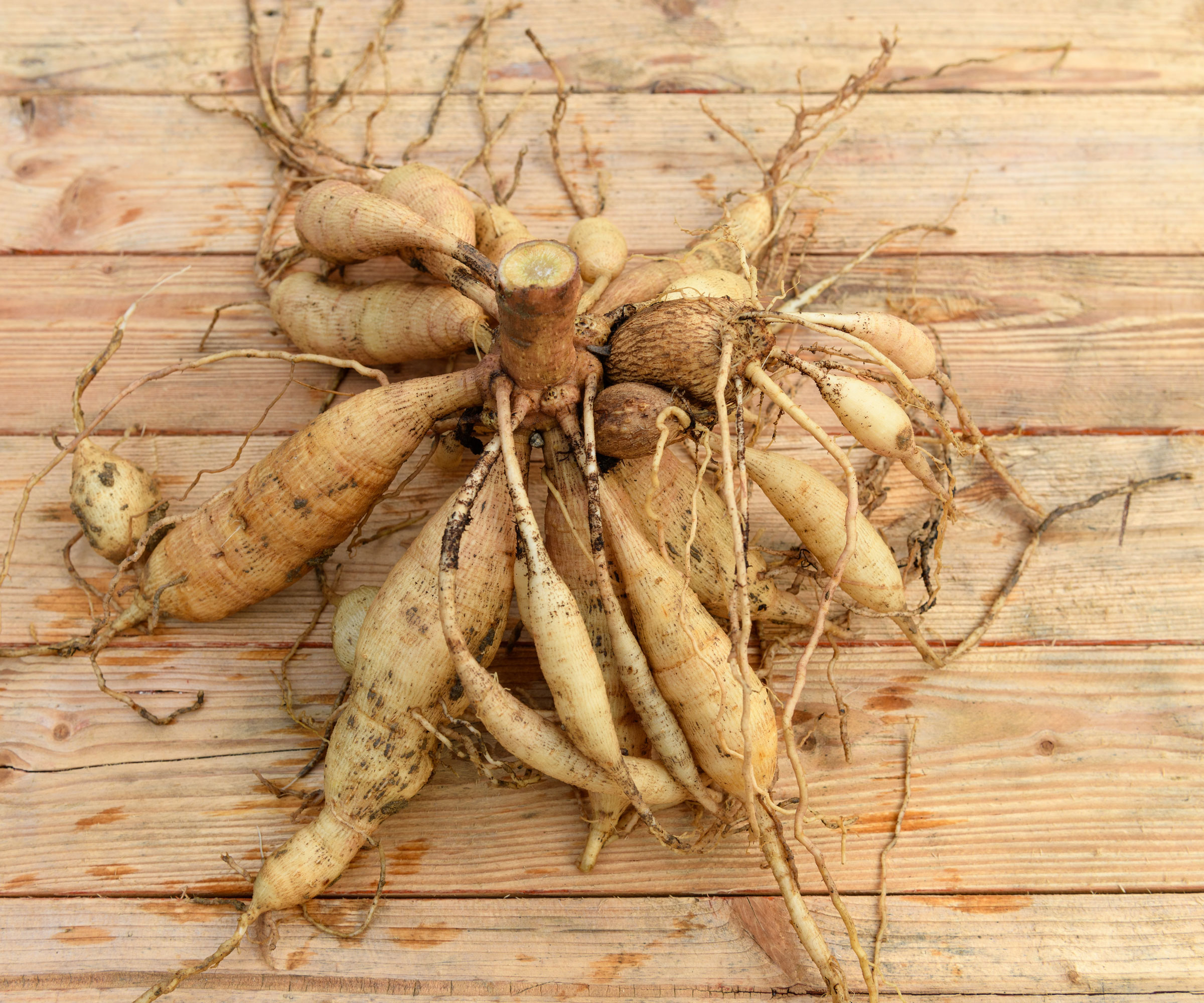
To enjoy flowers from the same plants next year, you must lift and store dahlia tubers if you live in USDA zones 7 and colder. If you leave them in the ground, it’s very likely they will be damaged by the cold and won’t survive the winter. Worrying about how to store dahlias for winter is a better worry than leaving them outside of your control and vulnerable to punishing weather extremes.
You also might want to consider lifting your dahlias for winter storage if you’re on the edge of the necessary hardiness zones, or if you live in a warmer zone but your soil is heavy or tends to get soggy in winter. In these cases, if you try leaving the tubers in the ground, you run the risk of cold or moisture damage.
Even in zones that are plenty warm, it’s worth lifting dahlia tubers if you have good storage options. Put it this way – tubers left in the ground, no matter where, are at the mercy of the weather, the soil, and any pathogens. Proper storage allows you greater control over the health of your dahlias and their ability to bloom again.
What to Remember if You Lift
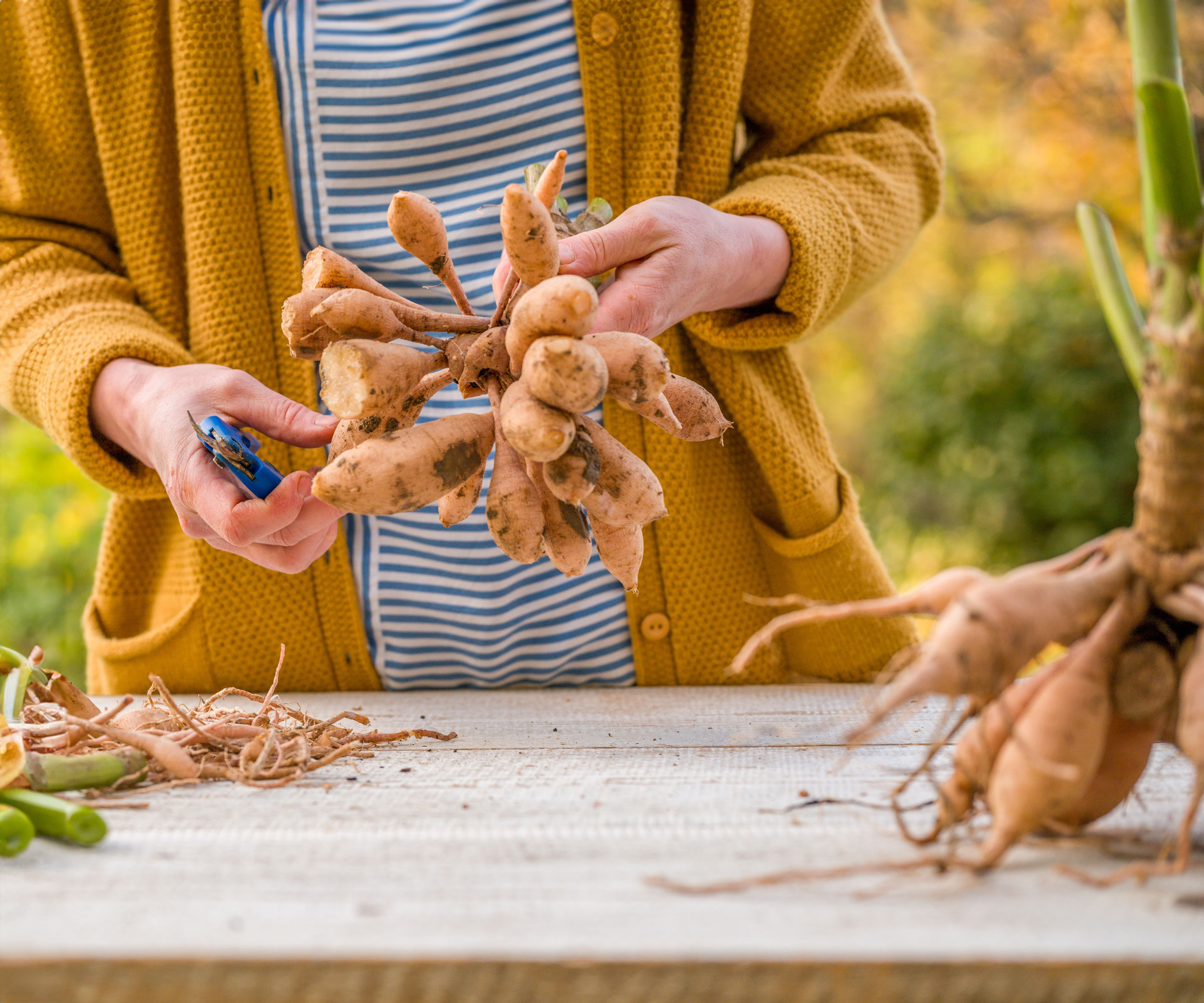
Lifting and storing dahlias is a great way to keep plants for next year, but it has to be done right. Silly mistakes can ruin your tubers and waste your efforts. Here are my expert tips for successful removal and winter storage of dahlia tubers:
- The best time to dig up dahlias is after the first hard frost, when the leaves have died or blackened. Don’t wait until the ground is frozen.
- Cut back the foliage and stalks, using a sharp blade like this great-value Secateurs Set from Spear & Jackson, available at Amazon. Wait a week or two to dig up the tubers. This gives them a chance to develop eyes, which are vital for new growth later. It’s important to get them out of the ground before a freeze, though, so keep a watchful eye on the weather.
- Use a garden fork and spade to carefully dig around and lift tubers. Take care to avoid piercing them, then leave them to dry in the sun.
- Gently brush off dirt, divide tuber clumps, and dispose of any tubers that show rot. Place them in a sheltered, dry spot to cure for a few days.
- Store your dahlia tubers between 40 and 50°F (4-10°C). The ThermoPro TP50 Hygrometer, available at Amazon, is a user-friendly way of tracking temperature and humidity changes at a glance while under cover.
- Storing dahlia tubers in paper bags is one option. You can also wrap them in newspaper or store them in sawdust or vermiculite, such as Back to the Roots Organic Vermiculite, available at Amazon.
- Check on your tubers throughout winter. They should not get too dry, but they should also not get moist enough to start rotting.
Your stored dahlia tubers will be ready to go back in the ground in spring next year after the last frost and when the soil has warmed. Alternatively, you can place your dahlias in pots in spring. With good care, you should be able to enjoy your dahlias for years to come. Happy lifting!
Need more ideas for growing inspiration, timely gardening jobs and seasonal expert advice delivered straight to your inbox? Sign up for the free Gardening Know How Newsletter!

Mary Ellen Ellis has been gardening for over 20 years. With degrees in Chemistry and Biology, Mary Ellen's specialties are flowers, native plants, and herbs.
- Amy DraissDigital Community Manager